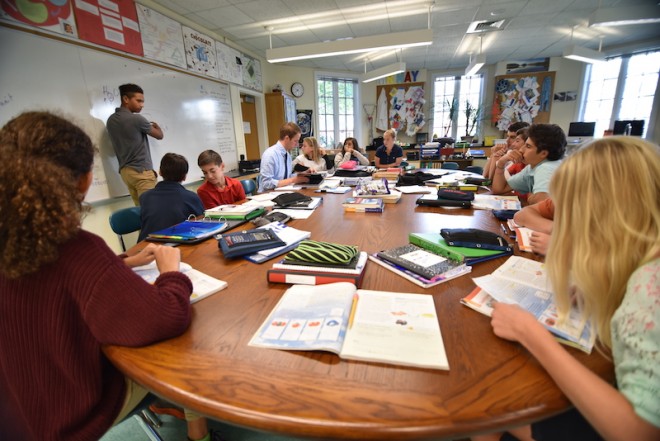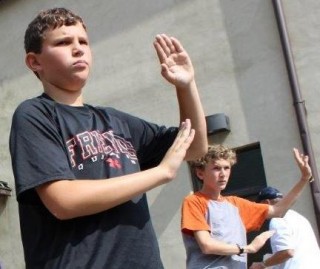Five years ago Shore Country Day School decided to embrace the Harkness pedagogy as a way to teach primary sources in our Grade 8 history curriculum. It has been so successful that we have incorporated elements of it down into the lower grades. Developing a classroom of fully engaged middle schoolers makes a lot of sense: it integrates fully with their state of being, especially social and cognitive development. Sitting 12 to 14 young people around a table and asking them to think and talk combines the very best of what this age group wants: to be treated with respect, to be in charge, and to talk.
Middle schoolers have certain characteristics unique to their tribe. Not only are they growing physically, they also have a strong need to belong to a group. The Harkness pedagogy interacts fluidly with the cognitive growth spurts and the need for energy release that middle schoolers are experiencing. When students gather at the Harkness table for a discussion, each of them knows that his or her voice matters. They are part of a collaborative dynamic that uses extended conversations, which help them understand their ideas are real, valued, and meaningful.
When students are asked what they like about this type of learning, their answers reflect the genuine nature of the class; nothing feels fake or irrelevant, so they don’t consider the study of history to be a waste of time. They enjoy hearing each other’s opinions, and they understand that the long-term results of this class help them build confidence in expressing their own ideas. They also like to challenge each other, teasing out a topic or theme to get at the core of someone’s opinion.
Shore’s embrace of Harkness is not about “best practices”; it’s about building real relationships between students and knowledge, and it’s about a commitment to deep principles of unquestionable learning. When you let go the reins as a middle school teacher, you promote broad-ranging learning that will last a lifetime.






